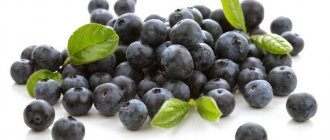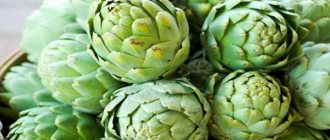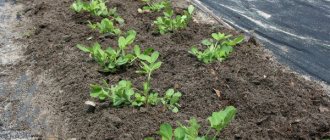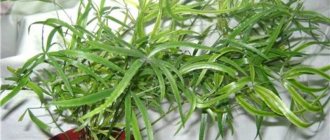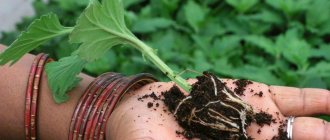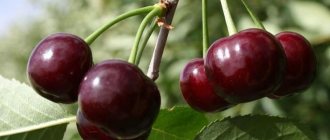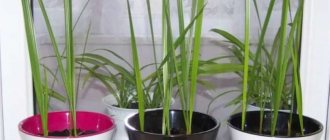- Description of the parsnip plant
- Useful properties of parsnip vegetable
- Video: how to cook parsnips
- Nutritional value of parsnips
- Dangerous properties of parsnips
- Parsnip: planting and care in open ground
- Where to plant parsnips
- Parsnip varieties
- Timing for sowing parsnips in open ground
- Sowing parsnips and caring for them
- Sowing parsnips in open ground
- Sowing parsnips for seedlings
- Caring for parsnips in open ground
- Parsnip feeding
- Protecting parsnips from diseases and pests
- Harvesting and storing parsnips: how and when to harvest
- How to collect parsnip seeds
- Video: how to grow parsnips from seeds
The parsnip vegetable contains a large amount of useful substances and has many healing properties. That is why it is used in folk and traditional medicine. In addition, medicines are created on its basis. Finding parsnips in the store is not easy, but you can always grow them yourself. We will tell you how to grow parsnips in the country in this article.
Parsnips are a sweetish, juicy root vegetable, a close relative of carrots.
Description of the parsnip plant
Parsnips are a herbaceous perennial plant with a fleshy root system. In the wild it grows among bushes. The south of the Ural Mountains and the Altai Territory are considered its homeland. Parsnips have been known since the end of the 12th century. It appeared in Russia even earlier than potatoes. It is quite easy to grow. It is cultivated and developed in the same way as carrots. Very often they are even grown together. During the first year, a root crop is formed; in the second year, the plant blooms and produces seeds. The main difference is that its roots are larger than those of carrots. This should be taken into account when planting seeds - the distance between them should be slightly greater than between carrot seeds.
Parsnip leaves are odd-pinnate and large in size with blunt edges. They are smooth on top and rough below. Of several pairs of ovate, lobed or coarsely serrate pubescent sessile leaves. The lower ones are short-petioled, and the upper leaves have a vaginal base. The leaves release essential oils on hot days. They are quite hot and can burn the skin. For this reason, it is better to care for the plant either early in the morning or late in the evening.
Parsnip flowers are bisexual. Regular shape, small. Five-membered. Collected into complex umbrellas of 5 - 15 rays. There are usually no wrappers. The calyx is invisible. The corolla has a bright yellow color. They can be seen in the photo of parsnips. Flowers appear in the second half of summer. The fruits appear in September. They are a flat-compressed, rounded, elliptical, narrow-winged two-seeded plant. Bees collect high-quality light honey from the flowers of this plant.
The parsnip fruit is cone-shaped or round in shape, the smooth surface of which is covered with convex buds, and can reach up to 800 g.
In the second year of the parsnip growing season, flower stalks form from the upper part of the root crop preserved after wintering.
Stem up to one meter high. Erect, branched, rough, pubescent, sharply ribbed, grooved-faceted.
The shape of the root vegetable parsnips is similar to carrots, but its color is much lighter. This vegetable also tastes like carrots, but is sharper and tart. When cut, the color is yellowish-brown or yellowish-gray.
It will add zest to any dish. Gives a hint of light spice. In addition, the root vegetable of parsnip is useful. It contains vitamin C and macronutrients (potassium, phosphorus, calcium, magnesium and sodium).
Features of parsnips
The height of the rough, grooved, erect stem can vary from 0.3 to 2 meters; it has a faceted, sharply ribbed shape, and there is pubescence on its surface. The upper part of the stem is branched. The imparipinnate leaf blades include from 2 to 7 pairs of more or less pubescent leaves of a large, oval or lobed shape; in the upper part they are sessile, and in the lower part they have short petioles. The ripening of the root crop is observed in the first year of growth. It is thick, fragrant, white in color, has a sweetish taste, the root can be cone-shaped (like a carrot) or round (like a turnip). The color of the fruit in cross section is dirty yellow. The composition of complex umbrellas includes from 5 to 15 rays, which in turn consist of bisexual regular small flowers with a yellow corolla. Flowering of parsnips is observed in the second year of growth. The shape of the fruit is rounded-oval; this flattened plant is colored dirty yellow. Common parsnip is considered the closest relative of the following garden crops: carrots, parsley, fennel, dill, celery, coriander and lovage.
EVERYTHING YOU NEED TO KNOW ABOUT PASTERNIP!
Useful properties of parsnip vegetable
The beneficial properties of parsnips have been known since ancient times. Ancient Greek doctors used it as an analgesic and diuretic. It stimulated appetite, improved sexual activity, and helped with colic. The medicinal properties of parsnips are also recognized by modern doctors. This vegetable is widely used in folk medicine. A decoction of the roots helps with cough, and a water infusion is used as a tonic for the rehabilitation of seriously ill patients. The vegetable improves digestion and strengthens the walls of capillary vessels. Decoctions help in the treatment of baldness. In medicine, it is also used for the prevention and treatment of vascular and heart diseases. It is used for hypertension, angina pectoris, muscle cramps. Parsnip infusions have a sedative effect, so they are used for neuroses, as well as to improve sleep.
Parsnips are similar to carrots, but they are white or cream in color and sweeter than carrots.
The vegetable is used in dietary nutrition. For kidney stones and cholelithiasis. For nervous diseases, bronchitis, gout, pneumonia.
Vegetable juice is rich in silicon, potassium, phosphorus, chlorine, and sulfur. Its use helps strengthen brittle nails. Chlorine and phosphorus have a beneficial effect on the functioning of the lungs and bronchi. Therefore, the juice is recommended for patients with emphysema, pneumonia and tuberculosis. Potassium improves brain function, which is why the juice is successfully used in the treatment of various mental diseases.
The fruits are used to make medicines that successfully treat various skin diseases. In particular, vitiligo. The leaves are used in dermatology.
Medicinal preparations are made from parsnip fruits that successfully treat various skin diseases:
- "Pastenacin", used for coronary insufficiency, to prevent attacks of angina, kidney and gastrointestinal diseases.
- "Beroxan" and "Eupiglin" for the treatment of vitiligo and alopecia, etc.
The vegetable contains mineral salts, sugar, proteins, essential and fatty oils, many vitamins and microelements. Pectic substances, starch, fiber. The seeds contain coumarins and glycosides.
Parsnips are one of the best sources of digestible and indigestible dietary fiber.
The roots and leaves are widely used in cooking. They are dried, boiled, stewed, and prepared into salads. Used as a spice and added to confectionery. Like potatoes, this vegetable turns black when cut. To prevent this from happening, the cut pieces should be immersed in water. The optimal cooking time for small pieces is ten minutes. For big ones - twenty. Then they will remain soft and will not have time to soften to the state of puree. Cooked roots resemble a sweetish nut. They can be baked or steamed. The parsnip vegetable can be a good side dish for fish or meat. In some dishes it is used instead of beets - for example, in vinaigrette.
On a note! Parsnip leaves are used only when they are young, and root vegetables are used only when they are one year old.
Baked parsnips can be a “correct” replacement for unhealthy French fries. Find out how to prepare it from the suggested video.
What is parsnip (vegetable)?
Parsnips are a cream-colored, cone-shaped root vegetable from the same family as carrots, similar in appearance, just as sweet but with a more complex, earthy, nutty flavor. In cooking it is used both as a vegetable and as a spice.
It looks like a fat white carrot, but despite the similarities, it is not often eaten raw as a crunchy snack. Parsnips are added to stir-fries, soups, stews and other dishes where they add a delicious nutty flavor.
If you buy a ready-made set of vegetables for making broth, then you will probably find this root vegetable there too.
Parsnips are also found as a main vegetable dish in European countries, and are especially loved in the UK.
What does parsnip look like - photo
general description
Scientifically speaking, parsnips are a sweet, fleshy underground root vegetable of a perennial plant from the genus Pastinaca and the family Apiaceae - the same as carrots. They are even similar in appearance and growth characteristics, however, like other members of the Apiaceae family: parsley, celery, caraway, dill, etc.
The official name of this vegetable: Pastinaca sativa - Common parsnip or Seed parsnip, synonyms - field borscht, tragus, popovnik, parsnip.
It is a large plant with a rosette of trifoliate leaves. The root crop is large, white, cone-shaped.
Nutritional value of parsnips
The percentage of daily intake is given in parentheses. Nutritional information is based on 100 grams of fresh, raw parsnips, based on information from the USDA.
General information: energy value - 75 kilocalories (4%); carbohydrates - 17.99 grams (14%); protein - 1.20 grams (2%); fats - 0.30 grams (1%); cholesterol - 0 milligrams (0%); fiber included in the food - 4.9 grams (13%).
Vitamins: folate - 67 micrograms (17%); nicotinic acid - 0.700 milligrams (4%); pantothenic acid - 0.600 milligrams (12%); pyridoxine (vitamin B6) - 0.90 milligrams (7%); riboflavin (vitamin B2) - 0.050 milligrams (4%); thiamine (vitamin B1) - 0.090 milligrams (7.5%); vitamin A - 0 international units (IU, IU) - 0%; vitamin C - 17 milligrams (29%); vitamin K - 22.5 micrograms (19%).
Electrolytes: sodium - 10 milligrams (<1%); potassium - 375 milligrams (8%).
Minerals: calcium - 36 milligrams (3.5%); copper - 0.120 milligrams (13%); iron - 0.59 milligrams (7.5%); magnesium - 29 milligrams (7%); manganese - 0.560 milligrams (24%); phosphorus - 71 milligrams (10%); selenium - 1.8 micrograms (3%); zinc - 0.59 milligrams (5%).
Phytonutrients: alpha-carotene (α-carotene) - 0 micrograms; beta-carotene (ß-carotene), which carrots are rich in - 0 micrograms; beta-cryptoxanthin (ß-cryptoxanthin) - 0 micrograms; lutein-zeaxanthin - 0 micrograms.
Health Benefits
The calorie content of 100 g of parsnip is 75 calories, which is about the same as in a banana and grapes. However, the sweet, juicy root contains no cholesterol.
This is one of the excellent sources of soluble and insoluble fiber: per 100 g - 4.9 mg or 13% of the daily value. Dietary fiber in the diet helps lower blood cholesterol levels and is useful for obesity and constipation.
Like carrots and other members of the Apiaceae family, parsnips also contain many antioxidants, such as falcarinol, falcarindiol, and panaxadiol.
Several studies have shown that these compounds have anti-inflammatory, antifungal and anticancer properties, providing protection against colon cancer and acute lymphoblastic leukemia.
The fresh root is also high in vitamin C, with about 17 mg or 28% of the recommended daily value. It is a powerful water-soluble antioxidant that supports healthy connective tissue and helps protect the body from disease by removing harmful free radicals.
Parsnips are rich in B vitamins such as folic acid, vitamin B-6 (pyridoxine), thiamine and pantothenic acid, as well as vitamins K and E.
It has a good amount of minerals: iron, calcium, copper, potassium, manganese and phosphorus. For example, potassium is an important component of cells and body fluids that helps control heart rate and blood pressure.
Parsnips have many interesting beneficial properties:
- Improves heart health. Parsnips are high in potassium, which acts as a vasodilator and lowers blood pressure. A large amount of folate (a form of folic acid) is an ideal complement to this property, as it has a huge impact on maintaining a healthy cardiovascular system.
- Rich in fiber. High dietary fiber is strongly associated with lower cholesterol levels (which further improves heart health) and a lower likelihood of developing diabetes. In addition, fiber is a key component of the digestive process, facilitating the passage of food through the digestive tract, reducing constipation and preventing other gastrointestinal problems.
- Reduces birth defects. Folate reduces neural tube birth defects in infants and normalizes metabolic processes related to energy production and the nervous system.
- Promotes weight loss. In addition to being a low-calorie vegetable with a good amount of solubles, parsnips prevent the release of ghrelin, the “hunger” hormone. This significantly reduces the desire to snack between meals and thus helps in weight loss.
- Increases immunity. Parsnips are filled with antioxidants, vitamins, and organic compounds that protect the body from toxic byproducts of our cellular metabolism. Vitamins C and E neutralize free radicals, which cause chronic diseases and even cancer. Vitamin C stimulates the production of white blood cells and also serves as a key element in the production of collagen.
Dangerous properties of parsnips
Parsnips are contraindicated for young children, older people, and those with individual intolerance. In addition, you should not eat parsnips if you have photodermatosis, an inflammation of the skin caused by increased sensitivity to sunlight. This is due to the fact that parsnips contain furocoumarins, which increase skin sensitivity to light. It is noteworthy that on hot days, essential oil is released from parsnip leaves, which causes burns on the skin. Therefore, when contacting this plant, you must use gloves.
Contraindications and possible harm
Parsnips are not good for everyone. People with a number of diseases should use it in moderation, only after consulting a doctor. Contraindications:
- diathesis;
- diabetes;
- emphysema;
- photodermatosis;
- severe disturbances in the functioning of the cardiovascular system;
- bronchial asthma.
People taking medications that increase photosensitivity, as well as those undergoing chemotherapy, should refrain from consuming the plant. The fact is that parsnips can enhance the side effects of certain medications and procedures.
There are age restrictions. The product is contraindicated for children under one year of age. People over 75 years of age should treat it with caution.
Children under 5 years of age, as well as nursing women, are recommended to eat parsnips that have been heat-treated.
Parsnip: planting and care in open ground
Parsnip is a plant belonging to the Umbelliferae family. However, unlike its related crops (coriander, dill, caraway, lovage and others), which are planted for their greens, parsnips are grown for their root vegetables.
There are two ways to grow healthy root vegetables:
- seedlings;
- seedless.
In the first case, the yield will be significantly higher. True, it will add a little trouble.
It is better to plant vegetable seeds not in open ground, but as seedlings. The fact is that although parsnips tolerate low temperatures well, the essential oils make the seeds take a long time to germinate.
Where to plant parsnips
A sunny location is suitable for this crop. Do not plant root crops in lowlands, as high levels of moisture form there during snowmelt and heavy rains. Choose sunny, warm areas. Also, never plant parsnips where groundwater lies close to the soil surface. The plant does not need excessive moisture. If there is an excess of moisture in the soil, the parsnip root crop is susceptible to diseases and may die. If there is a lot of moisture in your area, then plant parsnips on high raised beds. Use this method when planting in heavy soils. When planting in sandy soils that lose moisture excessively quickly, sowing is done 2-3 cm deeper than usual.
Parsnip varieties
Parsnip varieties are divided into early, mid-season and late varieties. In the first case, its growing season lasts from 100 to 110 days. In the second - from 140 to 150 days. Some of them have become favorites among gardeners and are widely grown in garden culture.
Among the early varieties of parsnip, “Delikates” and “Kulinar” are most often used for cultivation. The latter forms a root crop weighing 100-130 g in 85 days. In “Delicates”, the technical ripeness of the root crop occurs on the 110-115th day, but the root crop forms a mass of up to 200-350 g. The shelf life of both varieties is good, the pulp is tasty.
Parsnip "Culinary".
Parsnip "Petrik".
Of the mid-season parsnip varieties, the most common are the Petrik and Best of All varieties. In 115-130 days they form root crops of technical ripeness weighing from 200 g. They are distinguished by a pleasant aroma, white flesh of conical root crops, productivity, and good keeping quality.
Late parsnip varieties "Guernsey" and "Student" are mainly grown in regions with a long autumn period. The growing season ranges from 140 to 150 days. The root crops are long, conical in shape, up to 25-30 cm long, weighing 200-300 g. Both varieties are distinguished by increased aroma, dense white pulp with a sweet aftertaste, high yield, and good keeping quality. When choosing a variety, keep in mind that parsnips, whose roots are round, are usually early ripening. However, they are not characterized by abundant yields. Crop rotation. Parsnips are planted in areas where tomatoes, cucumbers, onions or cabbage grew before them. Then the parsnip grows strong and large. With proper crop rotation, the plant is not susceptible to its characteristic diseases. Priming. Plant parsnips in fertile soil with a wide humus layer. According to its mechanical composition, it requires loamy or sandy loam soil. On heavy soils (clayey), the root crop develops slowly and does not receive nutrients. The acidity level for good taste of parsnips is required to be neutral. Avoid acidic soils; deoxidize them using liming (chalk, lime, ash or other similar means). The soil for growing parsnips, like other root vegetables, requires loose soil. It allows oxygen and moisture to pass through. Loose soil does not acidify, which reduces the risk of disease. Soil preparation. Prepare the soil for parsnips according to the usual pattern for planting root crops. In the fall, dig it up to a depth of 30 cm. When digging the beds, add humus - at the rate of several kilograms per 1 sq.m. Before sowing the seeds, they will begin to decompose and the soil will absorb the necessary substances.
In the spring, before sowing, break up the clods of soil and, if necessary, loosen the soil. After this, begin planting. If you did not have time to prepare the soil in advance in the fall, then do it a month before the expected time of sowing. Checking seeds. In order to ensure the quality of the seeds, they can be germinated. If seeds are sown directly into the ground without checking, many of them may simply not germinate.
Preliminary preparation of parsnip seeds accelerates the emergence of seedlings by 15-20 days.
To germinate, seeds are placed in water or a humid environment. It is common to germinate seeds in damp gauze. To do this, take gauze, cut into two equal parts, and a flat plate. Moisten the material with warm water. Line a plate with one piece of gauze. Place the seeds on it. Cover them with the second piece of cloth. Keep them at room temperature. Over time, some seeds will germinate, but some will not. Plant those that have sprouted immediately. Otherwise, the sprouts may break off. You can also prepare parsnip seeds in another way. They are placed in warm water and placed in a warm place. After a couple of days, they are treated with a growth stimulator (for example, Zircon). The fact is that parsnip seeds do not germinate well due to the presence of essential oil in them. A growth stimulator will speed up seed germination.
Pests and diseases of parsnip
Parsnip diseases
Parsnips suffer from the same diseases as other members of the Umbrella family: septoria, cercospora, wet bacterial rot, black rot (or Alternaria), as well as white and gray rot of root crops.
Septoria blight is manifested by the formation of numerous medium-sized spots on the leaves of the plant without clear boundaries, which gradually darken and become brownish-brown. Affected plants turn yellow and dry out. Septoria disease progresses in cool weather against a background of high air humidity. Penetration of infection occurs through the stomata.
Cercospora blight can be recognized by irregularly shaped yellowish or dirty-brown spots up to 6 mm in diameter that appear on the leaves and stems of the plant. As the disease progresses, the spots in the middle fade, and the border around them becomes darker. The edges of the affected leaves rise and curl slightly. On the stems, elongated reddish-brown spots appear depressed. Sick plants lag behind in development, their leaves turn yellow and dry.
Wet bacterial rot is a widespread disease, especially in conditions of unstable temperature and high humidity. It affects root crops both during storage and in the field. The disease begins with rotting in the tail part - first, dark watery-oily spots appear on the plant, then in their place depressions with a rotting, fetid mass are formed, which flows from the fruit in the form of mucus, which is why the infection spreads to other plants very quickly.
Alternaria, or black rot, develops mainly already in storage: slightly depressed dark spots appear on root crops, on which a dark olive coating forms in damp weather. In cross-section, the affected tissues are coal-black in color.
White rot (botrytis) and gray rot (sclerotinia) differ in the color of the coating that forms on root crops. When the disease is white rot, the coating is white, in the form of flakes with black sclerotia of the fungus, and gray rot covers the root crops with a gray fluffy coating. These diseases are most harmful in warm weather with high humidity.
Processing parsnips
To prevent fungal diseases from affecting parsnips, we recommend a set of measures, including:
- compliance with crop rotation - parsnips can be returned to the site again no earlier than after 3-4 years;
- strict compliance of care activities with the rules of agricultural technology;
- thorough preparation of the site before planting, including the removal of remnants of the previous crop;
- pre-sowing half-hour treatment of seeds in water at a temperature of 50 ºC, followed by rapid cooling and drying;
- proper storage of root vegetables.
If, despite the strict fulfillment of all these conditions, a fungus appears on the site or in the storage facility, immediately remove the diseased specimens and treat healthy ones with one percent Bordeaux mixture, Fundazol or Topsin-M.
Parsnip pests
Of the insects, the most dangerous for parsnips are caraway moth, striped stink bug, field bug and aphid.
- When to plant and bury green manure - timing
Caraway moth destroys parsnip testes. Its caterpillars penetrate roots, stems and leaves and feed on their tissues. When flowering begins, they entangle the parsnip inflorescences in a web, feeding on pedicels, flowers and seeds, after which they crawl back into the stem. In order to destroy caterpillars, plants are sprayed with a decoction of tomato tops: 3.5 kg of tops are crushed, poured with 10 liters of boiling water, left for two days, filtered and 40 g of grated laundry soap added to the infusion.
The striped shield insect lives off the juice of young ovaries and buds, from which they die.
The field bug is a greenish-gray bug reaching a length of 4 mm. Females lay eggs in the tissue of the plant, and the larvae that emerge from them feed on the juice of the leaves and tops of parsnip shoots. At the puncture sites, the tissue dies, turns yellow and dries, and the toxic saliva of these pests leads to seed infertility. In warm areas, 3-4 generations of bedbugs can form during the growing season. You can destroy the field bug and striped stink bug with Karbofos or Aktellik.
Aphids are one of the most dangerous and at the same time most prolific pests. She, like bedbugs, feeds on plant sap, causing them to wither, become deformed and stop developing. In addition, she suffers from incurable viral diseases. You can fight it using traditional methods, or you can use Antitlin, Biotlin, or the same means as in the fight against the Colorado potato beetle - Confidor, for example.
As a preventive measure, it is necessary to fight weeds, and after harvesting, remove plant debris from the site and dig the soil deeply.
Timing for sowing parsnips in open ground
Parsnips begin to be sown in open ground early. The seeds of this crop germinate without problems at a temperature of 3ºC. The optimal temperature for germination of parsnip planting material is from +10ºС to +12ºС. The seeds take a long time to germinate because they contain essential oil. Oil creates a kind of shell, which makes germination difficult. For active growth of parsnips, a temperature is required - from 15ºС to 20ºС. In the middle climate zone, parsnips are planted at the end of April or at the beginning of May. However, be guided directly by the prevailing weather outside the window. If necessary, delay sowing until the temperature is suitable. Parsnips are often compared to carrots. These root vegetables are grown in similar ways. Parsnips are also sown before winter. For winter sowing, choose the right time. If you plant early when it is warm, the seeds will begin to grow, but when frost comes, the seedlings will die. Plant parsnips when cold weather has set in, but the soil is not yet frozen. Otherwise, it will be difficult for you to dig furrows for sowing.
Vegetable selection and storage
When choosing parsnips, it is important to pay attention to its appearance. The root crop must be of the correct shape, without damage, cracks, holes, rot, or mold.
Parsnip root is often confused with parsley root. They are distinguished by one difference. In the first root crop, the stem grows from a recess (like a carrot), while in the second it is a continuation of the root.
Store the vegetable in the cellar or in refrigerator drawers. Uncleaned and unwashed, it will last for a very long time.
The greens of the plant are stored at room temperature in a glass of water. If desired, dry it. When dry, the grass is placed in a fabric bag or glass container.
Sowing parsnips in open ground
Sow parsnips to a depth of 2 cm. First make planting grooves of the required size in the beds. After that, spill them. Compact the soil at the bottom of the planting furrows so that the seeds do not fall through. Spread the seeds out in a continuous strip. Cover them with soil. Leave a distance between the rows of parsnips - 20-30 cm. This vegetable is also planted in ribbons (two rows in one ribbon).
Before sowing, the prepared holes or rows are watered with warm water, possibly a solution of “Kornevin” or another root formation stimulator.
When the plants sprout, thin them out. Be guided by the number of true leaves that appear on the parsnip. Do the first thinning in the first week of germination, in the phase of 2 true leaves. The distance between the remaining specimens is 5 cm. Do the second thinning in the phase of 4 true leaves. The final distance between each plant is 15 cm. The plants you remove can be replanted. To do this, prepare the beds in advance and grow parsnips on them. In this case, when thinning, remove the plants from the soil carefully so as not to damage them.
The benefits of parsnips for weight loss
Since parsnips are calorie-free, they can be consumed without harming your figure. The substances contained in the vegetable activate metabolic processes in the body, which gives it a unique property - the ability to accelerate the breakdown of fats.
In addition, the diuretic property of parsnips helps remove excess fluid from the body.
Note! It is permissible to spend fasting days on parsnips. For this purpose, a kilogram of stewed or boiled vegetables is eaten throughout the day.
Sowing parsnips for seedlings
Parsnips are grown in seedlings if they want to get an early harvest. This is also done if there is late warming in a particular region. Parsnips are planted in separate containers, as they do not tolerate transplantation well. Plastic cups or cassettes are chosen as containers (they have separate slots for each plant). They must have drainage holes. If there are none, then do them. The soil for parsnips is prepared like this. Take the soil of a vegetable garden or garden and add sand (or other additives to improve the structure) to it. This is done for the reason that ordinary street soil for parsnips is dense. Its growth in such soil slows down. Pour the soil into the prepared containers so that 1 cm remains to the edge of the cups. Before sowing the seeds, spill the soil. Place a seed in each container and cover the planting material with soil. Cover the containers with film. Place the seeds in a warm place where the temperature is +20ºС. Every day, open the film for 15 minutes to ventilate the seeds. Check the soil for moisture; when it dries out, water the crops. When the first greens appear, remove the film completely and place the parsnips in a sunny place.
Parsnip seedlings are carefully thinned out when the plants form 2-3 true leaves.
Many gardeners grow parsnips through seedlings.
Daylight hours are 14 hours. If you sow parsnips when there is little light, then provide additional light to the seedlings. You can use fluorescent lamps for this. After a month, the seedlings can be planted in the beds. Check the weather forecast first. If the weather is unsuitable, wait until it warms up. Do not hurry. Seven days before planting, harden the seedlings outside (in the yard or on the balcony). Take them out for an hour on the first day and place them in a shaded place. Increase the time by another hour every day. Planting in open ground. Make planting holes in the soil to transplant parsnips. Their depth should correspond to the size of the earthen ball of seedlings. Replant parsnips using the root transfer method, so the plant will tolerate replanting easier, will hurt less, and will take root faster. Before transplanting, wet the soil ball of the seedlings. Remove the plant from the container and place it in the planting hole. Cover it with earth. At the same time, shake the plant periodically so that the soil is laid evenly and there are no voids left. After this, lightly tamp down the soil. Spill it. Plant all the seedlings this way.
How to grow parsnips from seedlings
They resort to growing parsnips through seedlings in order to obtain earlier production, since this plant grows for quite a long time and its root crops in the central zone often do not have time to ripen if cold weather comes early. Another reason to prefer the seedling method is that the plant’s seeds do not have good germination and take a long time to germinate, so when planting seeds directly into the ground, you can expect that seedlings will be rare and few root crops will be harvested. The process of growing parsnip seedlings consists of several stages; let’s look at them in more detail.
Soil selection and preparation
It is advisable to purchase a substrate for parsnip seedlings (it should be predominantly peat) in a store, ready for use. It is light, air- and moisture-permeable, and contains all the chemical elements necessary for the normal growth and development of plants. To disinfect it, you can spill it with a pink solution of potassium permanganate and then dry it.
How to prepare seeds before planting
Parsnip seeds should be fresh, collected during the previous season - these are the ones that germinate best. There is no need to take old ones, as they quickly lose their ability to germinate. In addition, even fresh seeds take a long time to germinate; their germination time is quite long, so to be safe, they need to be prepared for planting. Namely:
- Leave them in warm water for a day to swell.
- Then drain the water, transfer the parsnip seeds to a wet cloth, wrap it in a bag or put it in a plastic container.
- Once every 2-3 days they need to be removed from the container, washed under running water, left to air for a while and wrapped again in cloth. During the process, you should select those that have spoiled and throw them away.
Germination time is approximately 1.5 weeks, during which the seeds will grow roots and sprouts will appear. Then they need to be hardened by placing them in the refrigerator on the top shelf close to the freezer.
Sowing seeds
It must be remembered that young plants are sensitive to transplantation, so they must be grown in individual containers so as not to be pulled out before planting in the ground. Peat pots are ideal - you don’t need to remove the seedlings from them, you just need to lower them into the ground together. You need to place the soil mixture in each pot, without adding a little to the edges, sow 2-3 seeds, water them and sprinkle a thin layer of soil on top. The container with the seeds does not have to be kept warm; you can leave it in a cool room; this will not harm the parsnips.
Seedling care
While the parsnips are growing, the substrate must be kept moist, but it is unacceptable to over-moisten it; there should be no stagnation of moisture in the pots. To prevent the soil from drying out quickly, it is better to cover the container with film, and remove it after the sprouts appear.
Parsnip seedlings, like other vegetables, must be illuminated with phytolamps, since in conditions of short daylight hours (less than 14 hours) they need artificial lighting. Only in this case the vegetable seedlings will remain strong and will not stretch out. It needs to be fertilized 2 weeks after sowing the seeds, using ready-made complex fertilizers with their constituent microelements.
We recommend reading
The benefits and harms of daikon for the human body
What does asparagus look like, where and how does it grow?
The benefits and harms of asparagus for the human body
Useful properties and contraindications of parsnips
Caring for parsnips in open ground
While the plants are small and have just hatched, carefully weed the beds. If weeds are not removed in time, they will crowd out fledgling parsnip crops. Since this crop takes a long time to germinate and with difficulty, so as not to lose sight of the planting site, you can plant beacon crops, such as lettuce. Beacon plants will grow quickly and will remind you exactly where you planted your parsnips. Loosen the soil periodically. Don’t forget to do this after watering to break up the crust that has formed on the surface of the soil. Loosen the soil around the fragile plant carefully so as not to damage the seedling.
On a note! If you grow parsnips in unsuitable conditions, they will go to waste. This means that the plant does not form a root crop. It produces seeds in the first year. The disadvantage of this is that you expect a harvest, but instead receive planting material. Although you don't need it yet.
Parsnips in the beds need simple but regular care.
Water the parsnips generously, but don't overwater them. Root crops require sufficient water to develop. However, its excess leads to acidification of the soil and an increased risk of disease. A suitable option is rare but abundant watering.
Planting parsnips before winter
Cold-resistant parsnips are among the crops that are suitable for winter sowing. Planting parsnips before winter is carried out when the ground has already been touched by the first frosts.
In Siberia, this time falls in the first half of October, in central Russia and the Moscow region it is the end of October and the beginning of November. In the south, winter sowing of winter crops is carried out until the end of November.
But the soil for sowing is prepared in advance, since it is too late to prepare holes or furrows for seeds when the ground is slightly frozen.
After harvesting crops suitable as precursors for parsnips, the bed is immediately dug up, fertilized if necessary, and seedbeds are prepared.
Under no circumstances should seeds for pre-winter sowing be processed in any way: pre-winter sowing requires dry seed that will not be able to germinate before spring. Therefore, sowing is possible when no thaw can awaken the seed.
Having placed parsnip seeds in furrows or holes, the crops are sprinkled with fertile soil and mulched with a 3-4 cm layer of peat or compost.
In the spring, when the ground thaws, the mulch is carefully raked to make it easier for seedlings to break through to the surface.
Often before winter they plant a little more densely than in spring, since in spring already sprouted planting material is placed in the ground, and winter sowing always germinates with losses.
If the shoots turn out to be friendly, then the parsnips should be thinned out in the same way as when diving: the weakest specimens are pinched off at the surface of the ground.
Parsnip feeding
The first fertilizing of parsnips is timed to coincide with thinning of seedlings. Ammonium nitrate, “Kemira”, is added for shallow incorporation at a dose of 20-30 g/sq.m. m area.
All subsequent fertilizing is carried out after 2-3 weeks with phosphorus-potassium fertilizers at a dose of 15-25 g/sq.m. m. The 2-3rd fertilizing can be carried out with organic fertilizers or combined with spraying with boron, microelements, ash solution, which contains a large amount of microelements and other substances that have a positive effect on the quality of root crops and the duration of their storage.
Harvesting and storing parsnips: how and when to harvest
Parsnip roots are harvested in September. But until severe frosts occur. They dig them up and pull them out. They try not to damage the root crops, otherwise their shelf life will deteriorate. In this case, a shovel or villas are used.
Parsnip roots are harvested in the fall the first year.
In warm regions, part of the harvest is left in the ground for the winter.
If you didn’t have time to dig up the root crops before the frosts hit, don’t worry, they will overwinter just fine in the ground. In this case, the harvest date is postponed to spring. Trim the tops as much as possible. Be careful not to catch the flesh of the root vegetable. After you have dug up the root crop, clear the soil from it. Do this with a brush. Do not wash parsnips under any circumstances - this will reduce their shelf life. Before storing root parsnips, trim off the tops. Do this as much as possible, but so as not to damage the pulp of the vegetable. For short-term storage, place parsnip roots in the refrigerator. This way they are stored for a month. For long-term storage, parsnips are placed in a room where the temperature ranges from 0ºC to -1ºC. At the same time, it must be well ventilated and dry. The presence of high humidity will negatively affect crop storage. Parsnip roots can be laid out on the floor in one layer. Or place them in layers in a box, sprinkled with sand or sawdust.
Applications of parsnips
The plant is used in cooking, folk and traditional medicine, as well as cosmetology. Farmers use the crop as fodder.
Parsnip essential oil has an antiseptic effect. It is used to treat rashes, added to anti-cellulite massage products, and to masks to prolong youth.
The plant is used by pharmacists. Based on its extract, medications such as Beroxan and Pastinacin are made.
In cooking
Parsnips have a rich aroma and sweetish taste. A variety of dishes are prepared from root vegetables. They are added to soups, stews, and served as a side dish baked, steamed or pureed. Experienced chefs even prepare desserts from it, such as marmalade.
An aromatic seasoning is prepared from greens. It is also added to salad.
Parsnip recipes:
- Parsnip salad is one of the healthiest dishes made from this vegetable. To prepare it, the raw root vegetable is washed, peeled, and then grated (better for Korean carrots). The green apple is peeled and seeded and then cut into strips. The ingredients are seasoned with salt to taste, sour cream, and lemon juice.
- Puree. A dietary puree is prepared from the root vegetable. To do this, it is washed, peeled, cut into small pieces, and boiled in milk until soft. Then the vegetable is pureed in a blender or crushed with a potato masher, salted and peppered. Add a little olive oil or butter for taste.
- Garnish of baked vegetables. Carrots, parsnips, eggplant are cut into cubes and placed on a baking sheet. Whole cherry tomatoes, disassembled into broccoli florets, are sent to the root vegetables. Vegetables are watered with olive or refined odorless oil, salted and peppered. Place the baking sheet in an oven preheated to 180 degrees for 15–20 minutes.
View this post on Instagram
Posted by Jagannath
